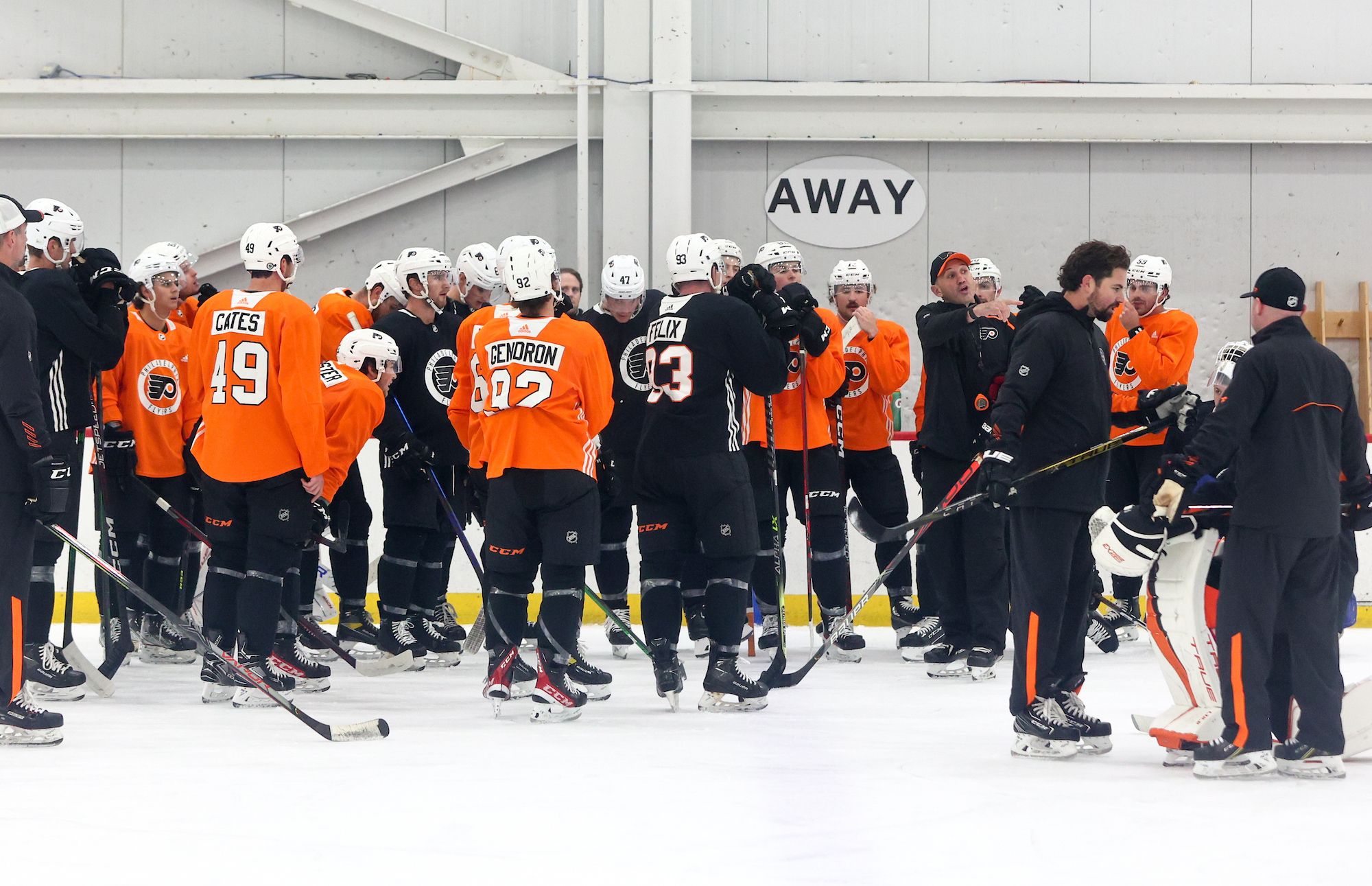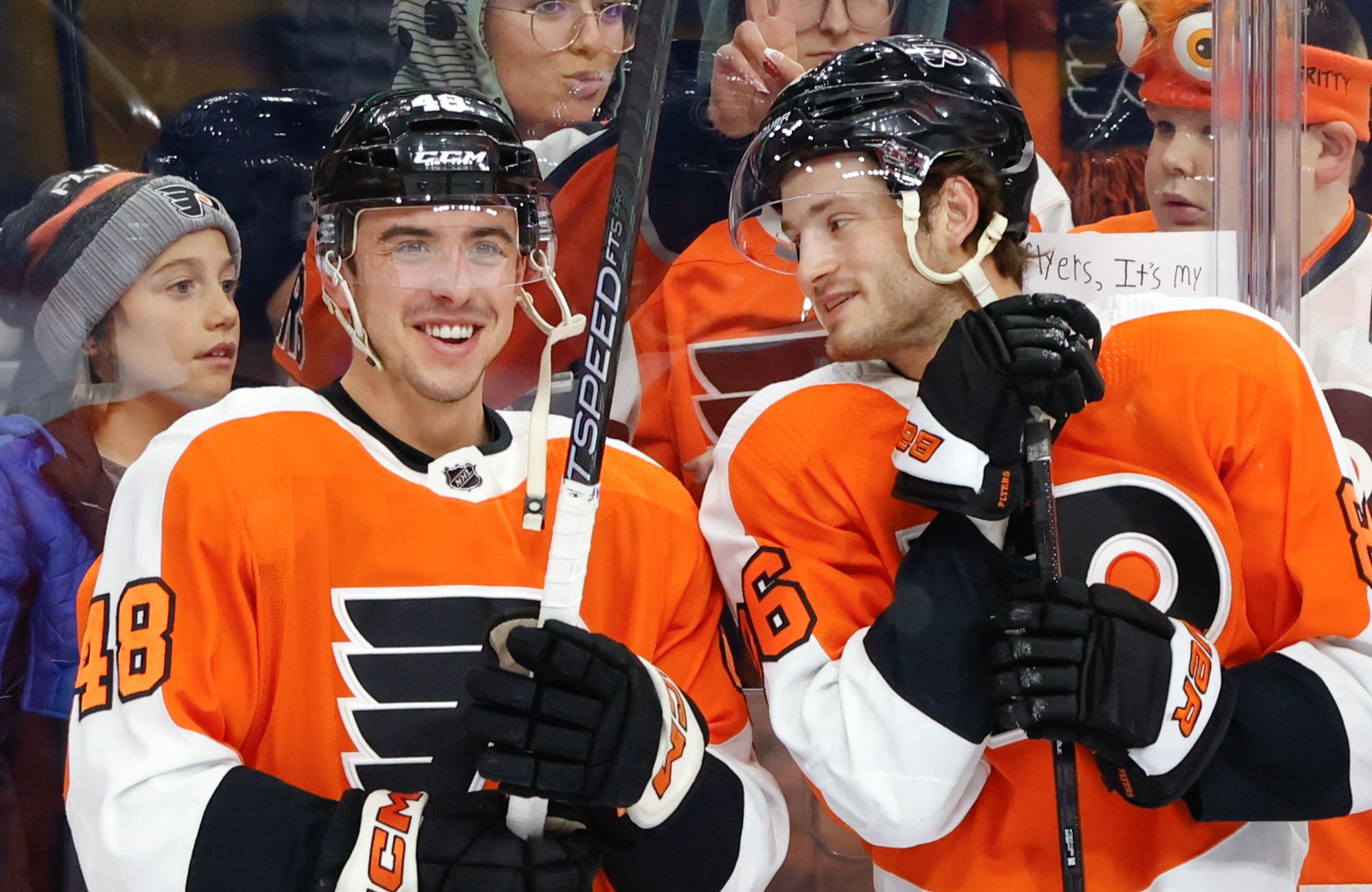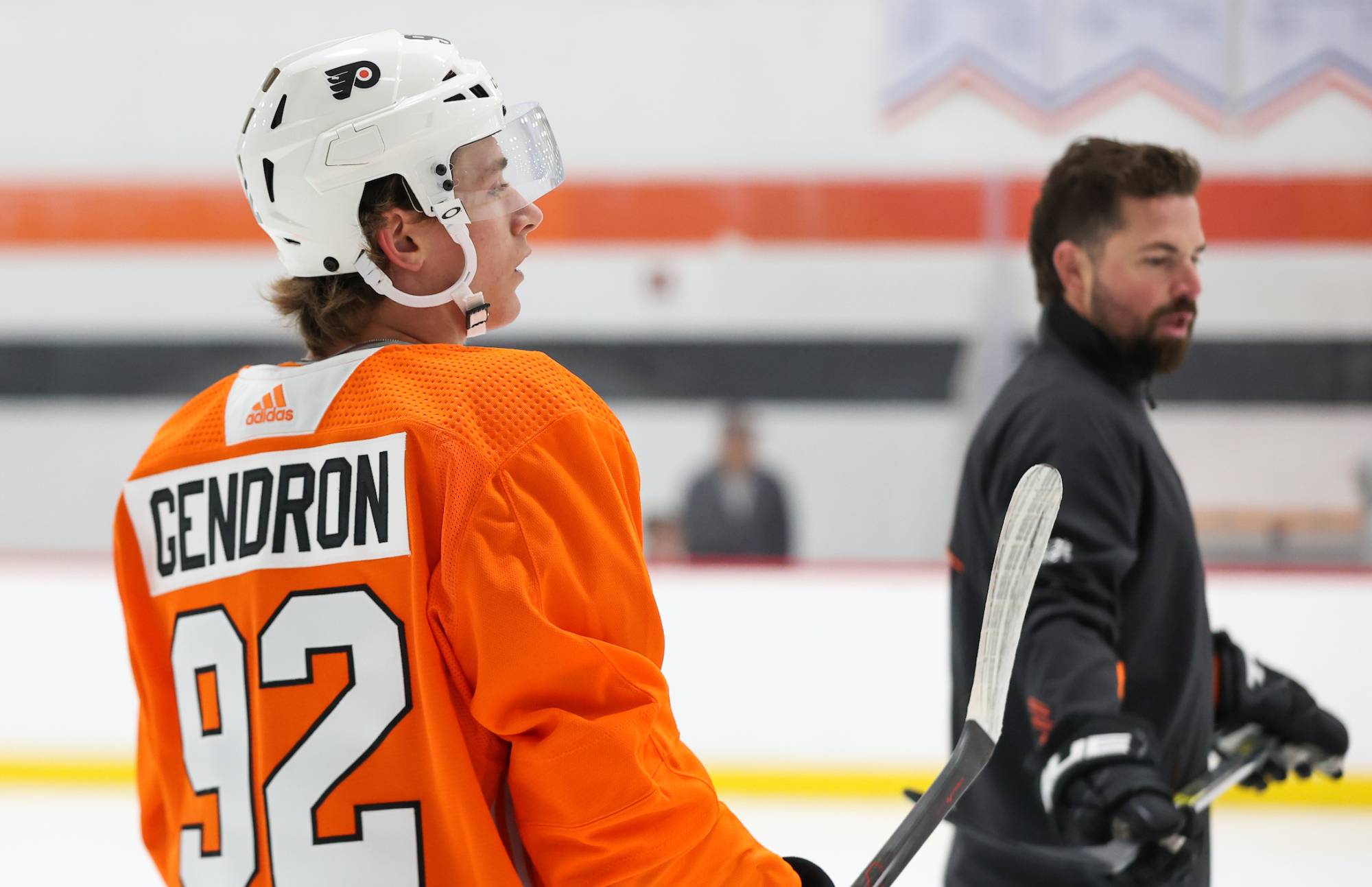The Flyers‘ penalty kill has been a struggle all season and it’s resulted in what was the worst-ranked unit in hockey until Saturday’s 5-for 5 effort.
Braydon Coburn plays the most minutes on that unit and was getting his fair share of the blame. It even had some asking if he should be the next defenseman to sit as a healthy scratch after Craig Berube has boldly scratched both Andrew MacDonald and Michael Del Zotto of late.
The favorite stat to cite over recent games has been the number of power-play goals Braydon Coburn has been on the ice for. It’s now at 10 power-play goals against in the past 13 games. The majority of those goals came in the November 14 and 15 games against Columbus and Montreal in which Coburn was on the ice for six power play goals against. Those two games just happen to be 12 and 13 games ago. (There’s a reason why, prior to Saturday’s game, people citing the statistic stopped at “the past 12 games”. Statistics are fun.)
Since those two games — and before Saturday’s strong effort — Coburn had been on the ice for four power play goals against in the previous nine games, totaling 31:03 of shorthanded time. Last year, the average team gave up about 6 goals per 60 minutes while down a man. So the average is roughly 3 goals per 30 minutes, and Coburn (who plays the most PK minutes on the team) had allowed 4 in 31 minutes. So over those nine games, Coburn had allowed one more goal than you might expect him to.
Last year, the Flyers’ penalty kill was ranked seventh in the NHL (and it was probably even better than that by the end of the year). Braydon Coburn led that team in shorthanded ice time per game. The year before that the Flyers’ penalty kill was ranked fifth in all of hockey. Braydon Coburn led that team in shorthanded ice time per game. In both of those seasons his primary partner, both at evens and on the penalty kill, was Kimmo Timonen.
To summarize what Kurt R. mentioned in a recent conversation we had … Coburn has played well on the penalty kill for years when his primary partner has been Timonen. Why is it that this year when the penalty kill is struggling, people’s first instinct is to blame Coburn rather than the person replacing Timonen? Coburn has proven he can be a highly effective penalty killer.
Speaking of “the person replacing Timonen,” over those same 12 games, Nicklas Grossmann had been on for nine power play goals against (to Coburn’s 10). Over the past ten games Grossmann has been on for four goals against (the same as Coburn). Grossmann, who is second to Coburn in short-handed time on ice, doesn’t appear to be doing any better than Coburn is.
I recently starting watching the documentary Cosmos, hosted by renowned physicist Neil deGrasse Tyson. In the very first episode he offers that science has gotten us to where we are by following a few simple rules:
- Test ideas by experiment and observation.
- Build on those ideas that pass the test.
- Reject the ones that fail.
- Follow the evidence wherever it leads.
- Question everything.
Braydon Coburn has years of observation and data on his side. He’s passed those tests so it makes it unlikely, in my opinion, that he’s to blame for the poor performances. I’ve decided to “question everything” (or rather some of the more recent criticism) and to do some observing of my own. I looked at every power play goal against over that 12 game stretch. I was curious if Coburn was to blame for the Flyers’ penalty kill struggles and those 10 goals against.
November 29 versus the Rangers
The puck is in the corner and comes out to a Ranger at the dot on Couturier’s side who is marking him. Read steps down in from his far point side thinking Couturier may get beat, but the puck slides all the way back to the point. Both Read and Couturier attack the point men and are basically on top of each other leaving a wide open one-timer on the near side. Coburn steps out to try to challenge the shooter/block the shot. He blocks the flubbed shot, tries to corral and clear the bouncing puck which he can’t do as the shooter is now on him. Meanwhile, Read had stepped up the boards expecting a chip which didn’t come. That leaves Brassard alone in the slot for the goal.
Verdict: Inconclusive. You can try to argue Coburn failed a clear, but he never had it cleanly after the block. The alternative is to argue he should have never stepped out in the first place. Personally, if I had to pinpoint one player at fault on this one it would be Read.
November 28 versus the Rangers
The Rangers are trying to gain the zone and Coburn forces a dump-in. MacDonald retrieves and tries to slap it around and out of the zone but it is knocked down. Coburn seems more concerned with what’s happening out at the point, despite both of his forwards being in ok position, and loses track of his man behind him who screens Emery.
Verdict: Coburn’s fault. It wasn’t some egregious error, but there wasn’t much of a reason Coburn shouldn’t have picked up that man earlier and tried to prevent him from getting to the front of the net.
November 26 versus the Red Wings
The Red Wings win an offensive zone draw back to the point. The D-man feeds Datsyuk in Giroux’s power-play office. He has a little room, walks to the top of the circle and scores on a wrister.
Verdict: Not Coburn’s fault. It’s hard to clearly fault anyone on this one. If anything I’d say perhaps Schultz for being a little loose on the man in-front, or Mason.
November 19 versus the Rangers
After a bit of a breakdown and a chance in the corner, the puck comes out to the Ranger point man. He walks in to the top of the circle where Coburn and Couturier converge on him slightly. Coburn’s man down low is just coming off of the boards and not yet a threat. Grossmann seems just as concerned with the shooter (who has two Flyers converging on him) and allows a pass through to St. Louis in a threatening position. Coburn is a bit slow to come off of the shooter and back to his man who is now approaching the net. St. Louis then feeds it across the crease to Nash for the goal as Coburn can’t get there.
Verdict: Inconclusive. Coburn isn’t without blame but I would probably put it more on Grossmann.
November 15 versus the Canadiens
The puck goes point to point and then to the slot for a good chance. Emery makes the initial save but Grossmann loses track of his man and he scores.
Verdict: Not Coburn’s fault.
There’s a neutral puck in corner that Coburn chases down and tries to clear. It’s a failed clear by him although the video isn’t clear as to if he just flubbed it, or if an opponent got a piece of it first. It makes its way back to the point, to the half-wall and then across the ice through the slot for a one-timer. The rebound is put into the empty net.
Verdict: Not Coburn’s fault. Couturier got sucked a bit too high which left the cross-ice pass wide open on his and Grossmann’s side of the ice.
The puck is played out to the point and then back to the nearside half-boards on Coburn’s side. It’s then passed to the low-man as the Canadien in front of the net moved out to the high slot. Del Zotto followed him leaving the backdoor pass open for Subban to bury it.
Verdict: Not Coburn’s fault.
November 14 versus the Blue Jackets
This is as tame as a power-play goal probably gets. There is some perimeter passing ultimately resulting in a one-timer from the point. It hits Read in the high slot and gets past Mason.
Verdict: Not Coburn’s fault.
There is some perimeter passing and then a pass find its way through the PK forwards to the far dot. Coburn steps out on his man, but Grossmann on the near side got too high leaving Foligno all alone on the backdoor for an easy one.
Verdict: Not Coburn’s fault.
A two-man advantage for Columbus results in a point shot from the near point. The rebound is ultimately put in by the man on Coburn’s side. Seeing as how this is a two-man advantage, it’s hard to fault anyone here. When you’re down two men the PK has to be tighter than it normally would be. When the puck is passed to the far point Grossmann has to step out slightly to challenge and Coburn retreats back to take his place near the man in front who is more threatening than the man at the bottom of the circle. When the puck finds Wisniewski’s stick there is nothing Coburn can do.
Verdict: Not Coburn’s fault.
* * *
In my opinion of the 10 goals against, one was Coburn’s fault, two were inconclusive, and seven were not his fault. Over those same 10 goals against, Grossmann was out there with Coburn on six of them, and was at fault for just as many. This is less an indictment of Grossmann and more of a plea to not pin the failings of the penalty kill on any one individual. Especially the guy that has played the most minutes in recent years on one of the league’s top penalty kills.
We’ve seen it enough times now to know that Coburn functions far better as the #2 on a given pairing. We’ve seen him excel with Timonen and be pedestrian when asked to do more. It’s not as if Coburn is without fault with respect to the sideshow the Flyers call a defense corps right now.
However, choosing an arbitrary line in the sand by which to judge goals against numbers isn’t reflective of Coburn’s play. He shouldn’t be scratched for it. He is not to blame for the bad penalty kill. It’s just … a pretty bad penalty kill that really misses a couple of key contributors.









